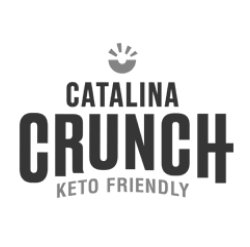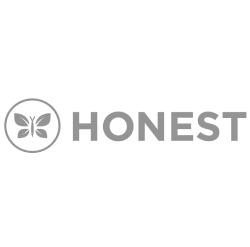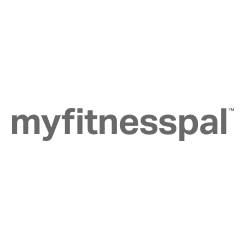Flip the Switch Episode 8: “I Sell Paddleboards”
SOPHIA: Today on Flip the Switch. The Frightful Five becomes even more frightening with their latest Q3 earnings report. Warren Buffet creates doubt in an already volatile crypto- world. And–big surprise–Google’s still riding its ad revenue all the way to the bank.
Our main discussion revolves around the necessary steps everyone should take in order to be successful when starting a business online. We cover the 4 key areas to get you started on the right path. Let’s get into it.
00:53 AUSTIN: Welcome to a very spooky edition of Flip the Switch presented by Power Digital marketing. Tomorrow is Halloween so we thought we’d throw in a little something for you guys there.
All right, besides that we’ve got some really great news to cover for you guys. Along with a very good conversation for small business owners. We’re going to talk about the main components of a digital marketing strategy and what you should look for regardless of what type of business you have.
So outside of that, hey guys, any news? What’s going on with you?
01:21 PAT: Nothing, really. I was just waiting for you to make the spooky joke. Now you did that…
01:28 AUSTIN: Ooh. I wish I had a Monster Mash joke. I feel like that’d be correct.
01:30 JOHN: We could throw in a sound-bit or something, or…
01:31 AUSTIN: Yeah, we’ll just play the song…
01:35 PAT: We’ll edit that in.
01:35 AUSTIN: All right, guys. Let’s get right into the news then. First up, we’re going to be talking about Bitcoin. We’ve got a lot happening around that per usual. I know the price is back up over 6000 after the hard-fork split that we talked about. A lot of people are weighing in on it, especially a very big name in Warren Buffett.
01:53 PAT: Yeah, that’s right. So news is coming out across a lot of different crypto-blogs lately. The one that I’m taking a look at right now is coindesk.com. And it’s talking about how Warren Buffett kind of doubled down his doubt with Bitcoin by calling it a bubble once again. He was quoted as saying, “People get excited at big price movements and Wall Street accommodates.” He described Bitcoin as a “real bubble” and then also criticized the idea of applying any kind of value to Bitcoin. He said that, “…you can’t value Bitcoin because it’s not a value producing asset.
I mean, I think that this is kind of goes along with that longer discussion we’ve been having for the last few weeks, around whether or not it’s valid. Whether or not these arguments and contrary statements about Bitcoin and cryptos as a whole hold any water.
02:38 AUSTIN: Yeah, definitely remind us of Jamie Dimon which we’ve discussed upon early episodes. What comes to mind with me and with Warren Buffet is how he say he doesn’t necessarily understand on how to value it. And that is in itself is frightful as an investor. Because if we think about in early 2008 when credit default swaps were a thing and synthetic credit default swaps were occurring… that market, no one could understand it, but a lot of money was going into it. Pretty similar to what crypto’s worth. That eventually collapsed and everyone lost their money. So when you don’t have something that’s tangible that’s understandable, that definitely can create some fear in the market.
But where I think that that difference from a credit default swap is there is actual value here. There is value in the block-chain, the technology. And what Warren Buffet is failing to discuss is the technology behind Bitcoin. That in itself is just showing where large scale investors are. Where old money is. Investment strategy that’s always worked, doesn’t understand where we’re at with technology.
03:39 PAT: It’s really frightening in the sense too that… people really value his opinion when it comes to stocks. Especially traditional stocks. He’s called the Oracle of Omaha for a reason. He’s out-performed the index every year for the last 20 straight years with his company Berkshire-Hathaway Holdings. And I think the fact that… at least from a little bit more of an outside perspective… I think what would worry me the most right now is that his comments and his, kind of, dissection of current events in the financial world sway a lot of people to take action. And with something that’s proving to be kind of an emotional buy and sell type thing that we’ve seen with Bitcoin. Specifically fluctuating so much in price just from current events coming out.
And different changes in policy. China. You have Wall Street playing games with this now. I’d be a little bit worried if I were invested in Bitcoin, specifically. And if I was invested only for the value of the asset as opposed to the block-chain behind it.
04:35 AUSTIN: You’re totally right there. The value of the asset is the big word here. The big phrase to take away from this. Because where Warren Buffett’s made his cash, and why he’s been so great has been valuing asset classes. And you see him touch upon that very quickly with Bitcoin.
The problem here is a decentralized market that is Bitcoin and crypto-currencies. It’s really basically impossible to value this as an asset class because 1) It’s not traded domestically. There’s no SEC to monitor this. You don’t have an index that you can look at every morning that’s open from 9:30 to 4:30. That you wake up in the morning and there’s your news.
Plus, people that are holding this… the large-scale, volume holders… you will never see them besides their Bitcoin address. You don’t know who they are. You don’t know what their intentions are. And you don’t know for how long they’re going to hold. So you don’t have funds that you can look to for long-term investment strategies. And that in itself makes this an asset class which you cannot value at this time.
05:28 PAT: Very interesting stuff. And again, like we talked about, we will see how much that price fluctuates over the course of the next couple weeks as fallout and reaction from some of these comments from Warren Buffett.
05:38 JOE: I think it’d be worth paying attention to the type of moves Warren’s making around cryptos in the coming future. Just kind of how Jamie Dimon dropped the price or the value of it and then threw a bunch of investment into it as it skyrocketed up. So I think it’d be interesting to watch.
05:52 AUSTIN: Yeah. Really good point, Joe. Really good point that you make that I didn’t even think about ’til right now. What’s he looking to do with this news? Hunh? Does he have some sort of value that he’s placing on it by knowing that his opinion weighs this much? You know, it’d be interesting to see for his portfolio and his companies if their maybe doing some brokering themselves. So keep that in mind when you’re doing your investment in cryptos going into this week. And, as always, make sure you read up on everything that’s happening with the technology and the market before you make any decisions.
06:21 PAT: Absolutely.
Moving into our second piece of news here. And we picked this because we covered the Frightful Five on the last podcast. But news came out on Friday that the Frightful Five, collectively, added over 180 billion dollars to their market value on Friday alone. A lot of this, most notably that we’ve seen in the news was from Amazon. Which raised… it increased its value by 62 billion dollars. Which is more than FedEx’s entire market cap. And that’s on Friday alone.
That propelled Jeff Bezos to become the richest man in the world once again. He’s been teetering on that. Going up against Bill Gates. And his net worth increased by just over 6.5 billion dollars on Friday alone. Share prices for Amazon went through the roof by about 300 bucks apiece.
What we’re seeing to is that, taking a look at these companies… they’ve gained almost 900 billion dollars in market cap just over the course of the last year. So this kind of goes back to the discussion that we’ve been having before. After seeing earnings numbers come out like this and seeing how the public reacts to them and how speculators and investors react to them. In the form of these heightened share prices coming out. Where does that leave the niche entrepreneur in Silicon Valley now?
07:33 AUSTIN: Yeah. I think that the conversation we had last week about the media company where they have to try to find a product that Google or Amazon can’t create. So they went the social media route in terms of an app like Tinder or a website like match.com. You have to enter the boardroom now, going, “Can’t Google do our product?” You know, “Can Google automate my business?”
Cause if the answer is yes, good luck. Because, as we talked about, going to get acquired or you’re going to fail because they will push you out. So that’s a conversation you have to have. Can the Big 5 do my product? Can they do my business? Because if so, we need to come up with something outside of that.
08:10 PAT: Yeah, absolutely. And another thing that we kind of touched on, but it’s becoming even more prevalent now is how much just cash they have behind these ventures that they can get into. Google, as an example, generated over 27.8 billion dollars in revenue this quarter. Which is up 24% this time last year. I’m reading this off of qz.com. It’s Quartz for anybody that would like to look this up after the show.
The previous record that they had set was 26.06 billion in the 4th quarter of 2016. And that seems like it would make sense. Q4 being your biggest earnings.
But I think the biggest thing that we’re seeing is that with Google especially, more and more of its ad revenue is communicating right to their bottom-line revenue. The money they’re making from ads is the biggest contributor to Alphabet, Inc.’s earnings quarter over quarter. Just that’s kind of the trend. It’s just getting more and more every single quarter.
09:01 AUSTIN: You know, I find it… that to be the most interesting thing. Of course it is. That’s what their business is built on. But they don’t want you to necessarily think of that when you think of Google. They want you to think, “We’re going to help you find the answer to your problem, because our search engine is the best, most intuitive piece of technology available to human beings. We’re going to automate everything. We just bought a bunch of AI. We’re about to make your life easier with self-driving cars. With smart-homes. These type of technologies that make your life easier.”
It takes away from what they’re core business is… their core revenue. And that’s selling you things. They are in your face… they acquire your data… and you’re giving it to them for free. By typing in a search every single day. So they’ve done a great job of distracting with parts of their business that don’t equate to revenue. And using that and using your data to make them as much money as possible and make them the largest company in the world.
09:52 PAT: And it’s something that we’ve talked about before too. But it’s interesting to me that that’s a little bit more wide-spread knowledge than it’s been in the past. And even so, we’re seeing that that margin… that revenue contribution coming from advertising specifically has increased almost every single quarter for the last 2 years. Google’s ad sales were 7.8 billion dollars of their profit–not of their revenue–of their profit for the quarter. Which is about 35% higher from this time last year.
10:20 AUSTIN: And I think out of, any time in the recent history that I can think of, we’d have people outcrying about the data situation where, “Wait, maybe they have too much of our data.” I’m starting to see ads from the most random places. Maybe a text message conversation or a conversation I’m having with my Google home. Whoa, maybe this is a step too far. And yet people are clicking on ads more than they ever have. This is what their revenue is saying. This is what their profit’s saying. Quarter by quarter, they’re seeing an increase in the amount of clicks that are occurring. And that is just in itself… are people putting their information by the wayside? They don’t care as long as they’re getting that gratification now. As long as that self-gratification is occurring in real-time, they don’t care what data they give away.
11:03 PAT: Mm-hmm. And it’s been really interesting too, because like I’ve talked about, as that data has become more… it’s more widely known that Google possesses that kind of personal data. They’re revenue is going through the roof, so their maintaining that kind of saturation of that market. On the other side of the coin too… Just making sure we recap some more of these companies in the Frightful Five, we’re seeing that Amazon, like we touched on, really increased on Friday. Up nearly 62 billion dollars in a single day.
Taking a look at some of these stats from CNBC, we can see that Amazon… its shares have increased in value 47% year-to-date. And as of Friday. Versus the S&P 500 15% gain year-to-date.
So it’s blowing out the index that the entire economy and the state of the economy is supposed to be predicated on by over 30% outright.
11:56 AUSTIN: It’s a good time to be on the NASDAQ, that’s for sure. That index is happening with the technology companies. But what we’re seeing here is these single day gains in their share price is larger than FedEx’s entire market cap. So their single day gains, larger than the entire market cap of an established company, FedEx.
12:13 PAT: Exactly. And again, that goes back to something else that we talked about too, which is kind of how Amazon is getting into some of these industries. It’s been rumored that they’re trying to cut FedEx out of some of their delivery methods through the holiday season while they test their own shipping methods on the west coast. So that probably in no small part had to do with how much it went up, over the course of Friday.
And on top of that, at the end of the day, it’s just earnings. They’re just making so much money every single quarter that people want to throw more money, to have some kind of ownership of it.
12:42 AUSTIN: And they’re keeping it in cash, too. Which is just incredible. They’re either offshoring it, putting it in subsidized… Subsidizing it or sending it in other directions. And that in itself is scary too. So those tax dollars are not coming back into the US. They’re keeping the profit as much as possible.
12:58 PAT: Absolutely. So it’s been interesting to see. Like we said, over 181 billion dollars gained in market value on Friday from the Frightful Five. We will keep you fully updated on those totals. And as that progresses throughout the rest of not just Q4, but the months after that.
13:12 AUSTIN: Our main topic today spurred off a lot of questions we get from small business owners on the different steps you need to take to have a seamless marketing plan. To sell something online. We thought it’d be great to put together a guide for you guys. And A, B, C, D process on where to start and where to end. To have a really great online marketing strategy for a small business. So we took an example, thinking about a local shop and something in San Diego we thought of was paddleboards. So let’s say you want to sell paddle-boards online and you also want to have people come into your shop. So your brick and mortar shop. So you sell online and you also sell in person.
Let’s start from the beginning. So the very, very basic step you need to have is, of course, you need to have a website.
13:52 JOHN: You have to have somewhere for people to go…
13:56 AUSTIN: An online marketplace…
14:00 PAT: Great progress we’re making so far…
14:01 AUSTIN: Right. Well, it seems dumb, right? It seems like, “Oh, of course, you’d have to have a website.” But a lot of businesses forget that part. I mean, you might just have a webpage or maybe you’re on Yelp to be reviewed. But what can someone really learn from that? It’s just one patron coming in to look… reviewing you product. Instead of you displaying who you truly are with words and images.
14:21 JOHN: Right. And we’ve talked about it on multiple other episodes that we’ve had, but where to start with a website. So taking into account the example of paddle-boards. Those are large products, but you can still ship them. So we’re going to keep it simple here. You could start with a Shopify website. You don’t need too many SKUs there, so that would totally work.
Or you could go to Woocommerce if you’re looking for more customization. Let’s say you’re really heavy on the brand side or you really want to be creative with your website, you could move into Woocommerce.
But let’s say you just have a logo and that’s the only thing that you have attached to your brand. Go ahead, get a Shopify theme and you could throw that together in a night. So that would be the first step that people should take.
15:02 AUSTIN: Yeah, absolutely. And then another thing too that I think a lot of people don’t really think about is that… just to kind of preface this discussion again. It doesn’t have to be a solitary, small business. This can be for people who own a franchise, with multiple local locations as well. If that were the scenario, John, would you still recommend the same sort of starting point for a website? Or how would that change based on whether it’s a franchisee as opposed to a stand-alone.
15:28 JOHN: Yeah, I think the only difference between the 2 would be the fulfillment of those orders that you’re getting online. So as a franchise you probably have a more complicated way of doing that. So that would be the biggest difference.
But no. I mean, the online store with a franchise behind that is going to be more successful and easier to set up. Because you probably have more people to do it, so…
15:52JOE: To keep running with the example of a paddle-boarding company, I wouldn’t really expect someone to be selling a lot of paddle-boards online. It be more as a service, where you could rent them, take them out. Maybe get a few lessons and go out with a team. Would you kind of suggest the same thing? Is there some sort of other route? Because it’d be more of a local business rather than a national retailer.
16:12 JOHN: It depends a little bit on how they’re going to accept those different appointments. So if they’re still going to have people pay online, then, yeah. Maybe you still list those as products. And it’s worked out the same exact way.
Or, if they want to accept a payment when the person comes in to take those lessons or whatever service they’re providing, it might be better to just do a lead generation form where they set up an appointment, then the appointment gets booked on a calendar somewhere. And then the person comes in and pays them.
So that would be the difference. You’d be going from e-commerce with Shopify or Woocommerce to just a lead gen site, which I would then recommend using WordPress probably.
16:52 PAT: Right. And I know that we’ve talked about that before.
16:55 JOE: And that would be a lot more secure than just trying to book appointments through Yelp, etc. It gives people a hub to go through, look at the content on your website and develop a little bit more of a feel for the service you’re trying to sell.
17:05 JOHN: Yeah, and I know we’re going to get into it, but it’s probably 100 times better to have your own website than to just only function through Yelp or something like that, so…
17:14 AUSTIN: Yeah, the biggest takeaway here is regardless of you’re doing lead gen so that you can set up lessons. Regardless if you’re selling the actual paddle-board online, the advantage here is having your own website where you’re curating what people are looking at and what people feel when they think of your product. So putting that information in front of them. Having those distinct pages that brand your product and your business is the most important. The first step you need to take to market yourself online.
All right, we’re going to jump into the second part, and this part is so people can search for your business and find you. And of course we’ll be talking about Google, which is the largest search engine on earth, and the one that everyone is using to find products near them.
And so the first thing I want to make here… the biggest point I want to make here is that you don’t need to force it down Google’s throat that you’re in a specific location. So people’s searches are already geo-targeted in that Google understands where they are. They’re smart enough, they’re intuitive that Google knows right now on my phone, on my laptop that I’m in San Diego, California. So I don’t need to write “San Diego, California paddle-boarding company,” all over my website. It’s important to say if you have an “About Me” page, you say, “We’re a paddle-boarding company in San Diego that specializes in X, Y and Z. And that’s really it. You don’t need to make it super-clear on that point because of the various steps you’re going to take.
The next biggest thing you’ll want to say–and something we’ve talked about–is getting your business on Google “My Business.” So that’s a free service that Google offers where you set up a landing page, a Google “My Business” page, and then they put you on Google maps. So what you’re going to do is you go to Google My Business. You can search that on Google. You start putting in the information for your business, and then Google is going to mail you a PIN number. And then you go back online, where you set up the business for Google “My Business” and then you put in your PIN number and that’s it. You start showing up on Google maps. You’re verified and now when people type in San Diego paddle-boarding company, you have the chance to show up there.
19:07 PAT: Right. You have the potential for some SERP representation. Take up a little bit of that real estate.
19:10 AUSTIN: Yeah. So what Google really likes is for you to use their products. And that’s still a pretty massive ranking factor for them. Is are you integrating yourself with what we’re offering in the local standpoint, so that our search engines have an easier chance of finding your business and knowing where you’re at.
19:27 PAT: More reference points.
19:29 AUSTIN: Yeah. More reference points are really important. And on top of that, you want to think about your business in a local sense. The same way that you would want to advertise in your local community. You know, in a human setting. So whether that be… if you want to advertise at the local Boys’ and Girls’ Club, you can still do that online. You can put an ad up with a link back to your website on that Boys’ and Girls’ Club website. So Google–as we said–they understand location and geography. So if you’re getting a link that’s pointing… or your putting a banner up on a website for a function or a fundraiser that’s occurring in your community, Google’s going to say, “Hey, look at them. They’re a part of the San Diego community here. Following this link back to their website. Okay, they must be an authoritative figure in San Diego. I’m going to bump them up in the search results because I see them appearing on other websites that are in the same area. So…
Go ahead Patrick…
20:18 PAT: Well, I was just going to say that’s pretty… it seems like the biggest takeaway there is that Google is consistently trying to find ways to effectively categorize and organize your website. They use on-page content, off-page content, and they use some of these other Google reference points as methods to do that if I’m hearing you right.
20:33 AUSTIN: Yeah, you are. And just like… I think if I could really drive this home and make it as easy as possible to understand. It’s advertise yourself online just like you would in your local communities. So as we talked about. Think about that. Next time that you’re thinking about, “How do I get myself more out there and to show up for ‘San Diego paddle-board Company'” The easiest way to start with is to make yourself appear in the local community in an online setting.
20:59 PAT: Absolutely. And kind of tagging onto that a little bit, making sure that you have that SERP representation. What you’re going to want to do to is also advertise on Google. For this example we’re going to be talking about advertising on Google. This could apply to Facebook as well. Though that’s not what I’m going to be getting into as much because I really feel that Google is the marketplace. It’s where people are actively searching for solutions. And they’re a little bit more likely to end up converting as a result of that.
So, the first thing that I would do is I would build out some campaigns. First of all, making sure I have bids on all of my branded terms, which we’ve talked about before. That is super-important. You need to make sure that you have branded SERP representation, whether that’s organic and on the advertising side. We always see that that’s a lot of people that are already familiar with the brand. That’s why they’re typing in the brand name as opposed to something that’s informationally driven. Like, let’s say that you own the company Austin. It’s called “Austin’s Paddle-boards.” We’re going to bid on terms that are like, “Austin’s paddle-boards,” “Austin’s paddle-boards hours,” “Austin’s paddle-boards phone number.” All things that are what we want to be showing up for. As opposed to “paddle-board company San Diego,” which is a non-branded term and is designed to bring in a little bit more of the new user.
But what it does too, is it also maintains brand equity and like you were saying, it can definitely help in terms of Google’s ad rank. Just as it does with the organic rankings because it knows how to associate a domain, with a keyword, with the landing page experience. And make sure that’s all tied together so that someone that was looking for “Austin’s paddle-boards” actually gets taken to Austin’s paddle-boards. And has the best chance of doing that.
22:33 AUSTIN: So the big inverse here is that with the advertising is you want to bid on the word “San Diego.” So unlike where I was saying where you don’t have to force it down the throat on Google search, for organic search… that’s the inverse. You want to show up for that specific keyword, am I correct?
22:50 PAT: Yeah, so… and that has changed a little bit. It used to be very much correct where you would append the location at the end of those terms. And actually, something that I was going to get into right next was that it was a local company. You only have, let’s say, one location that’s in San Diego. You want to bid on only San Diego ZIP codes as you’re targeting. You don’t want your ads to be showing up all over the country because even if somebody clicks through your ad, makes you accrue that advertising cost. Goes to the website and then doesn’t end up converting because they live in New Jersey, and it’s on the other side of the entire country. You effectively wasted time and money and you’re looking at results that aren’t going to translate into in-store sales.
23:27 AUSTIN: Right.
23:29 PAT: So you want to make sure that you’re bidding on specific ZIP codes that are within the San Diego community…
23:34 AUSTIN: Yeah, I think that that’s something that I don’t even realize or think about is the fact that you can bid on ZIP codes. That in itself is a great competitor asset for you. Because probably the people around you won’t understand that unless you have that inside knowledge.
23:50 JOHN: So have you actually seen that mistake before? Of people bidding on ZIP codes in the wrong place? Is that, like, a common mistake?
23:56 PAT: Oh absolutely. As an advertiser it is your due diligence, if they tell you a certain piece of targeting criteria, like, “I only want to be showing up in the Florida area.” Or “I only want to be showing up near Orlando,” let’s say. Or going with this example, San Diego. You need to make sure that those are the only ZIP codes that you’re bidding on. Because you really don’t have permission to be spending their money anywhere else.
And second of all, it’s a really easy mistake to make. It’s just… what is it… six… a 5 or 6 digit code depending on where you live in the country.
If you’re not QA-ing that very closely and trying to reference that against a bigger database of ZIP codes, you’re going to spend your money in places that aren’t qualified. You’re going to make your CPL costs go up more than likely. You’re going to spend more than you have to. And it’s just going to kind of look irrelevant to that user.
So you need to make sure that you’re bidding on the right ZIP codes.
Another thing that you can do, is if you have a brick and mortar location where Google is… or if you have your company as part of Google “My Business,” you can set a radius targeting if you’re trying to do in-store sales for foot traffic. So you can say, I only want this ad to show up to anyone that’s within ten miles of my brick and mortar address. And if that’s the case, you load that in and you make sure that your ads only show up there to.
25:09 AUSTIN: Yeah, I see that as really advantageous. You’re a paddle-boarding company and you’re probably be going to get a lot of tourists. And maybe you are honing in on the airport. So you get people just getting off the plane. You know, you want to set that geographic location for your ads to show up right in the airport location. Because you know they get off the plane, “What am I doing in San Diego? Oh, they have an ocean. Let’s go paddle-boarding.”
You can be geographically specific with your ads just like you can with the organic search.
25:34 PAT: Yeah, exactly. So that’s what you want to do from that perspective. And you want to make sure that you’re integrating with a lot of different again, pieces of Google suite so to speak. So one thing that I would recommend too–location extensions. so if people pull up your ad, not only will it show up organically in the Google My Business on the right-hand side–but it will show up on the SERP as a part of the ad as a location you can click on. And then get directions to.
So if it’s a brick and mortar location, you have one location. It will show up as a part of the ad listing and you can click on that.
26:03 AUSTIN: So I know reviews are a pretty big indicator for organic search. That’s another thing I forgot to touch upon for reviews are very important. That’s interacting with the product that Google’s offering. Does that play a part in advertising geographically and specifically to local?
26:18 PAT: Yeah, so when you’re advertising locally and somebody types in, let’s say, “paddle-board company near me.” And we’re only serving within the San Diego area. And let’s say that the Google “My Business” profile pops up on the right-hand side and they see that there’s only 3 out of 5 stars. And there’s like 400 reviews. To the user that’s going to deter them quite substantially from clicking through your ad and trying to engage with the brand. So this is a good tip for local business owners–if you have a pretty big local following already–good local customers that are loyal to you, as you start building out your online presence and you build out your Google “My Business” profile, really make sure that everyone that loves your brand is reviewing you. Putting good comments, and rating you at a high star rating, because that will really help people’s… I mean, it doesn’t help your ad rank or anything like that… but it really helps click-through rate a lot…
27:09 AUSTIN: And it does help your organic rank, so Google does look… what I consider a more archaic ranking factor for local is reviews. They actually take into account how many review you had, how many 5 star review you had and then that’ll factor into them allowing for your search result to pop up on their local 3 pack as it were. Everyone’s seen that where it’s a map and you have the different locations that you can click on. And then those businesses that are on the map are directly in that 3 pack.
So reviews are a very big organic ranking factor, and very big also, for just people from an advertising standpoint. Is this a good company or not?
27:46 PAT: It’s part of the decision-making process. Exactly. So you wanna make sure you have that fully built out.
The next thing you’re going to want to do is probably have call extensions enabled as well. Especially if it’s a local campaign. You want your phone number to be visible in the ad. Because if that shows up on mobile–and we’re seeing 53% of all user activity this last year was on mobile. That number’s only going up. If you have a call extension on your mobile ads specifically, a user can search for your brand or your offering and then just click on that call extension. And then make a call to the business. Without even needing to click to the webpage, fill out another form and submit that.
So that just takes layers out of the conversion path, and makes people more likely to end up becoming a convertor for your company.
28:27 AUSTIN: That’s huge too in terms of tracking. So no… Gone are the days where you’re wondering how many phone calls you got this month or going back through the call logs. You have the specific ability to understand how many calls came through and what the value is on that. That cost per lead acquitted to the actual call that occurred.
28:45 PAT: Yeah, exactly. So you want to make sure that you have that totally integrated as well. Again, you want to make sure that you’re bidding on some localized search terms. So not “San Diego” but you want to say “near me,” “around me” “within walking distance of me.”
And you want to start to tailor these a little bit more to voice search as well. Because we’re seeing that become more and more prominent. You want to make sure that as people are talking to Siri or any of these other at-home type AI assistants, that they… you’re keyword mapping is reflective of how someone would talk. Because the way people talk and the way people search on a keyboard are vastly different. Which we’re seeing.
29:18 AUSTIN: Absolutely. All right, let’s get into the… you know how we just wrapped up that advertising segment. Let’s get into the 4th component of what we would consider to be a very important part of a local marketing campaign. And that is the content that you’re putting out. So this really ties into your brand and how people are going to feel about you. And when we talk content, we’re talking blog posts, we’re talking the images that you portray. We’re talking videos that you might put out. So for the sake of conversation… “paddle-board”… let’s say you’re going to want to put out some content around the different paddle-boards that you have or even how to paddle-board.
These different types of content that your customers can… potential customers can enjoy or look at. We’ll get them in the door at a high level and allow them to potentially convert if they see you as the place to go to learn how to paddle-board, let’s say.
30:06 JOE: Yeah, I think the on-page content for more of your product or service pages would be the most important. And I think that everyone should have a blog on their website. A lot of times for a local business, a blog most likely won’t be driving you a lot of sales or a lot of traffic. You’re going to get outranked by a lot of more authoritative type competitors.
But the big thing when it comes to content… And content is a word that gets thrown around a lot. It’s pretty overarching over a lot of different avenues.
And I think social media is kind of a no brainer. Instagram being a big one, especially for a paddle-boarding company. If you’re going out and about–having videos of people out on your paddle-boards, tagging you, etc. I mean, the social proof in a lot of the social media channels is huge. Setting up your entire Facebook page to kind of cater to your audience and all the services and photos and outings that people are doing with your business….
31:01 AUSTIN: How much posting are you being done per week, let’s say. For an example of this type of company? From a local standpoint? How many times would you say they need to posting on Instagram or Facebook on a weekly or maybe even monthly basis?
31:13 JOE: I would say around anywhere from 3 to 5 times a week. If you possibly could. A lot of that could be user generated, where you could offer discounts to people if they’re… “Okay, you took our paddle-boards out today. If you get a video of your group out there having a good time and send it to us to post on our Instagram or post on our Facebook, we’ll give you 15% off your next outing. Or we’ll give you some sort of discount.”
31:35 AUSTIN: Right. And this content in itself is also a review. So what Joe’s talking about… giving out a discount in return for a video of people having fun out on the beach using your paddle-boards. That’s a review. So if people are on your Instagram and they’re searching around and they find a video of your product and someone enjoying that. Being happy. That happiness is associate with your brand, and that’s a 5 star review.
31:57 JOE: I was just having this conversation with someone this weekend about how a lot of times now, people won’t be Googling for something, for instance if you’re looking for a restaurant, you might go straight to their Instagram to see if they’re posting pictures of their food. Posting pictures of the restaurant, etc. And it gives you a really good idea of what’s going on there. Even beyond Yelp.
So I think those types of things just give you that social proof over a lot of different avenues that were more traditional. Yelp–definitely there for the reviews and whatnot, but if you’re able to control your content or have some curate it for you and do it professionally, it’s only going to convince more people to want to use your service. Or contact you, just because they know you’re putting in the time and effort to present yourself in a professional way.
32:40 AUSTIN: Yeah, this conversation just reminds me a lot of the conversation we had around brand–where you’re trying to create tangible feeling on the Internet. And that’s going to be the best way to portray yourself is what Joe’s talking about. Things are shifting. People are no longer going to Yelp to see what someone wrote as much. Now, instead, they’re going straight onto your Instagram page. So this is your chance–as a brand–to create a certain feeling for that potential customer.
33:04 JOE: Yeah. And it allows you to control the narrative as well. Because a lot of times in those review type websites like Yelp, you kinda get skeptical about the types of people that are reviewing them. You don’t really know those people. You don’t really know what’s going on. So if you’re able to present yourself in a way that you want to be perceived it will put you above the rest in terms of trying to drive customers or even traffic to your website.
33:27 PAT: I have a quick question for you. Because a lot of clients will ask for videos or… which can be appropriate for almost any business type. But images specifically… like, infographics? In what scenario is that something that you think is beneficial to have on the website?
If I sell low price-point item like groceries, should I have any kind of infographic around that? Or is it more reserved for those high-end items.
33:53 JOE: I don’t think that’s necessary. I mean, if you’re trying to drive traffic or sales as a local business that type of content wouldn’t really be necessary. I think those are for the bigger hitters that have the types of budgets to invest in having someone create those for you, or create those types of resources in order to rank for those certain types of keywords. Or just offer some sort of service.
If you have that at your disposal to do at a lower price point, I would say go for it. But otherwise I would invest that time and money into more advertising or even hiring someone to develop content for your website. So if we’re even going back to the creation of things like images and videos, you could use that money to hire a photographer or hire someone on a retainer to go out each week or each month to take video, take photos, and have all those types of assets just all over your website. Such as a gallery. It just gives you more clout in the local community.
34:50 AUSTIN: Yeah, the custom aspect to it, I love. A lot of the businesses I see locally that do well are showcasing their product in their own light, without pulling from a stock photo situation. Those are really quick and can be very helpful for putting out a lot of content, but it doesn’t necessarily explain who you are or you can properly portray what you want your customer to feel about you.
So that was a really great conversation. Thank you everyone for chiming in on the different parts. Let’s recap real quick. On the 4 important parts of the marketing campaign. First, we have the website. Make sure you get that up there, because it’s going to be your chance to explain to the Internet who are and what you’re customer’s going to see and feel when they first enter and see your brand’s name.
The next one is get Google to find you locally. So set up that Google “My Business” page. Get those reviews going so you can start showing up in the local 3 pack.
The 3rd one is advertise locally on Google. Make sure you’re using the ZIP code situation…
35:45 PAT: Leverage everything that Google will let you do from the ads perspective locally. It becomes so, so, so important…
35:51 AUSTIN: Yeah, make sure you leverage everything locally as Patrick is talking about.
And the 4th one is that customized content. You have to utilize Instagram these days. Facebook to a degree. Instagram is your friend. Yelp is becoming where people are a little too smart to think that this is a legitimate review. So use Instagram to your advantage. Create cool videos. Custom imagery. All these things where people are showcasing your product to your benefit. That’s going to help you drive a really great local marketing strategy online.
36:18 JOHN: Do you think that we should now start Austin’s paddleboards?
36:24 AUSTIN: Ooh. I think we just came up with actually a pretty viable business model.
36:27 PAT: I think we just went through the entire lean business model, honestly…
36:29 JOE: I’ve seen Austin surf. I’m not buying it.
36:34 AUSTIN: (laughing) Yeah, actually, on second thought I can’t even stand up. So we’re just going to forget that part.
36:37 PAT: All right everybody. Moving on into our next segment here. This is a bit that we’re going to just call, “Categories.” Pretty much what we did is we wanted to pick a business category, industry or vertical that we feel is dying out or is on the way out. Everybody came with one that’s ready for today’s discussion. First things first, we’re going to go to Joe for his pick. Joe, what did you pick?
37:00 JOE: I picked the US postal service.
37:06 PAT: Wow. Okay. Little bit of a hot take.
37:08 JOE: And I think just them specifically because I think the death of traditional mail is definitely imminent as the world tries to go more green. Email and all the electronic devices are ways that you could receive information now. I personally hate receiving mail unless it’s a package from Amazon. So I think companies like Amazon, UPS, FedEx, etc. are going to continue to thrive in the coming years. But I think in a way soon enough there’ll be enough people not on board for getting traditional mail anymore. Receiving letters. And I would say, maybe in the next 10 years that you could see that coming to an end.
37:46 AUSTIN: The strike rate on printed mail with coupons has got to be very low. Because now you can Google search a coupon if you’re going to buy something. So if I’m going to order Papa John’s pizza online, I can Google search “Papa John’s pizza coupon” and have it right there. Instead of having to wait for it to come to my door. Or some sort of thing.
So the ease that we always talk about where people want something now. You can get that through the Internet. So that traditional mail seems to be out the door. Especially because mail is becoming so privatized. So what we mean by that… when you’re talking about Amazon Prime is a great example of that. It’s very personalized. The only thing people want to receive in the mail is what they specifically asked for.
38:23 JOE: So please write to your local congressman to get traditional mail taken out of your community so we can reduce the amount of waste in the world.
38:33 AUSTIN: but you can write us letters.
38:35 PAT: Some more great wisdom being imparted by Joe right there. All right, John. You go first.
38:38 JOHN: I’m going to piggyback off of the resident Amazon Prime guy, and I’m going to say that groceries… grocers… are going to be gone. Because of companies like Amazon. So you can actually order your groceries. I do, personally. Already. Order my groceries through Amazon.
38:56 AUSTIN: John’s one of those guys that we talked about when we said the revenue was going up for Albertson’s.
39:01 PAT: Revenue’s going up for Albertson’s because of guys like John.
39:02JOHN: Exactly. but groceries stores like Albertson’s and Vaughan’s are adopting online sales and I think it’s just going to continue to tumble that way until there is no store to go to…
39:13 AUSTIN: Yeah, until there is no more social interaction.
39:17 JOHN: Exactly. You just sit on your couch and then it’s just like a feeding tube that comes…
39:20 AUSTIN: Whatever you can do to remove yourself as far away from actually interacting with other human beings in the grocery store is the direction we’re headed.
39:25 JOHN: Yeah, exactly. It’s a beautiful life.
39:27 JOE: That in itself is a really interesting conversation, because is this good? You know, we think about, “Great, I get my groceries right away.”
39:36 PAT: You can get people that put it in your fridge for you. If you’re cool with breaking and entering…
39:38 JOE: That’s amazing.
39:40 JOHN: I don’t know. I think if they get rid of the bigger chains that’s cool. And you can order your groceries, the things that you need… but then you still have the farmer’s market. You keep it a little trendy. And you go on a walk on a Sunday. I like that.
39:51 JOE: I think it’s good as long as there’s a solution in place to take care of all of the waste that comes with getting everything delivered to you. Think about how many boxes you get in the mail. How many cardboard boxes you receive for packages. I think as long as there’s some sort of recycling solution to take care of that, then it’s good.
40:11 JOHN: You’re right. I’m not thinking green.
40:13 AUSTIN: Yeah, because one thing that we have seen a lot and in California it is now law… there’s no plastic bags. Or you have to pay for the bag if you want it they ask at the checkout. So that’s eliminated a lot of people… a lot of people are either bringing their bag or their just carrying their products out.
So that in itself can be an issue. So if they can come up with a great way to do that. But I like what you’re saying. If you get rid of those larger chains, and people are just ordering things online, the only outward occurring event where you’d get something is like, a farmer’s market. Which is very small-scale.
40:43 PAT: All right. My turn. Here… favorite part of the whole thing. No but seriously, after hearing your guys’ parts it’s interesting what I picked. So I picked prescriptions.
I think that in a very short amount of time, everyone is going to be redeeming and filling their prescriptions using online services. That in-person interaction is going to be gone. There’s a few reasons for this…
41:03 AUSTIN: So you mean just like the active going into the pharmacy.
41:06 PAT: Right. The act of going into the pharmacy.
41:08 AUSTIN: For a second, I was like, “People won’t need medicine? Did you find the cure for…?
41:12 JOHN: Some real ground-breaking wisdom from Pat Kreidler…
41:15 JOE: That’s incredible, Pat…
41:16 PAT: All right. I deserved that one, Joe. Here’s the thing. Amazon is moving into the prescription drug market. Right? We’ve seen other companies like Express Scripts acquire big health-care companies like Evacorp to try to consolidate their portion of the market share before Amazon gets in there.
What’s the common thread among 3 other industries that we’ve talked about that we think are not going to be around in a couple of years?
41:36 AUSTIN: You all have to go out to get them.
41:39 PAT: Right. You have to go out to get them, and Amazon is figuring out a way to make that not the case. We’re seeing already rumors that as early as 2018, 2019, Amazon is going to be moving into the prescription drug market. Helping people fill their prescriptions online using their Prime account. I think that that’s absolutely what’s going to happen. We saw this happen with people visiting physicians. Urgent care is online. You can do “WebMD” if you want to scare yourself to death about some of the smallest symptoms you ever seen.
So that, you know, those options exist for some of these other… what would have been thought to be traditional avenues of medicine. Why wouldn’t that be the case for just verifying your identity and getting your prescription filled online?
42:20 AUSTIN: Yeah, history and data says that you’re correct there. Because that is another home-delivery aspect to it. Especially if you’re an elderly individual where you don’t have the capability to go to the store. It’s probably really difficult for you to go get your medicine. You need it no matter what. Having the ability to Amazon air-drop you your prescriptions… who wouldn’t want that?
42:38 PAT: Well, and think about social interaction too. If people don’t like going and getting groceries cause they’re afraid of other people seeing what they eat, do you think that people want other people really seeing what prescription medicines they’re taking all the time?
42:49 JOHN: Who goes to the store and is afraid of people seeing what they eat?
42:53 PAT: That might have been an exclusive thing to me, but I think understand the bigger point here. It’s just that people don’t want to deal with other people looking at them when they’re doing things that they consider to be sensitive.
43:03 JOE: Pat’s grocery list is Buffalo sauce and Oreos…
43:08 AUSTIN: Anyway, Patrick makes a very good point about that. And I bet you that’ll be coming to fruition where we see the home delivery stepping into pharmaceuticals.
All right, last one is for me. We’re talking sweet tooth, so we’re talking things that are also bad for you. This one specifically would be soda.
So soda is on the decline and has been for the last 3 or 4 years, but we’re seeing it drop to the point where maybe in the next 5 to 10 years soda won’t be a thing where you’re going out and buying things like Dr. Pepper or Coca-Cola. and the reason for this–and we’re not talking about soda companies in itself going out of business–but people are actually just switching to water. So bottled water in itself has become such a massive industry. Aquafina had an 11% increase in sales year-over-year. Dasani, about a 6% increase year-over-year. A water called Poland Spring had an 11% increase year-over-year in sales. And then the diet sodas, on the opposite side, 10% drop in diet Pepsi, 5% drop in Diet Coke. So people are being more health conscious in the sense that the drink to go to is no longer the soda, the sweet-tooth satisfying. It’s just to get water. You know, people they care more about their figure. They need to be hydrated. It doesn’t have any calories in it. Therefore they’re choosing water.
44:24 PAT: I find that to be really interesting given the fact that there’s so much data around how bad bottled water is for the environment. How wasteful it is. And some of the other stuff that we’ve been talking about is green friendly. Except John. He’s not very green friendly.
But Joe’s was green friendly. And he was talking about how it helped save paper and he was asking John about how wasteful some of the Amazon stuff is when it’s delivered directly to you. You know, it begs the question for me–while I definitely agree with this initial first step–where I think soda’s going to be on the way out and bottled water’s on the way in. but, you know, what happens when there’s a change of pace? Where people start to value the environment over their own… not own health, but where they consider it at the same level, you know what I mean?
45:03 JOE: I actually think that bottled water, or single-use bottled water is going to be out the door pretty soon as well. Just because there’s a lot of people that are up against that, and trying to get that aspect of beverage companies taking care of… getting rid of them because it’s just creating so much plastic waste.
45:22 AUSTIN: Yeah, and we would like to hope so, because that’s another thing where you can get it… clean water, we have that luxury. As an American, and you know thankfully, in southern California we have that at our disposal. So what… we gotta think about why is bottled water still such a thing? And that’s because the largest bottling companies are the ones who own the bottled water companies themselves.
So these guys saw this coming… who knows how many years ago. But Coca-Cola knew that this day was coming. So that’s why they have Aquafina. That’s why they have Dasani. Because they knew that at some point soda would be out the door and bottled water, they’d need to push that.
So that’s where at right now. It’ll be very interesting to see what these large companies do to curb what we’re talking about on the ecological side of things.
46:03 JOE: It also just came to mind when you started talking about getting rid of soda or it being on its way out. I think traditional ice cream is on its way out as well.
46:11 AUSTIN: Oh no. Please. Don’t say that, Joe.
46:13 JOE: Yeah. Because…
46:15 PAT: That better be another terrible take by Joe…
46:18 JOE: this year Halo Top outsold both Haagen Dazs and Ben and Jerry’s…
46:22 AUSTIN: Oh, okay. So ice cream’s not out. Just traditional ice creams…
46:24 JOE: Yes. Cause there’s a lot healthier alternative that still tastes just as good. And now all of these other big, traditional ice cream companies are adopting their model and advertising them in the exact way that Halo Top started.
46:37 JOHN: Hashtag–this is not an ad
46:38 AUSTIN: Where can you get Halo Top?
46:39 JOE: Anywhere.
46:41 AUSTIN: Okay, so it’s just in every store. I haven’t had it yet, so I’m just wondering…
46:43 JOE: I read an article that they grew…
PAT: Can you buy it through Amazon?
JOE: I’m pretty sure, yeah.
AUSTIN: I bet you you can.
JOHN: Can you send a letter to Amazon to send you a package of Halo Top and a bottled water?
AUSTIN: (laughing) No, mail is out.
JOE: All right. We should just cut all that out.
47:01 AUSTIN: All right, everybody that just about wraps up episode 8 of Flip the Switch podcast presented by Power Digital Marketing. If you ever have questions for any of us or want to give us feedback on what we talked about today, hit us on our social handles. That is @flipswitchcast for both Facebook and Instagram. And Twitter, that is @flipswitchcast. Again, this has been Pat Kreidler, John Saunders, Joe Hollerup and Austin Mahaffy signing off.

















